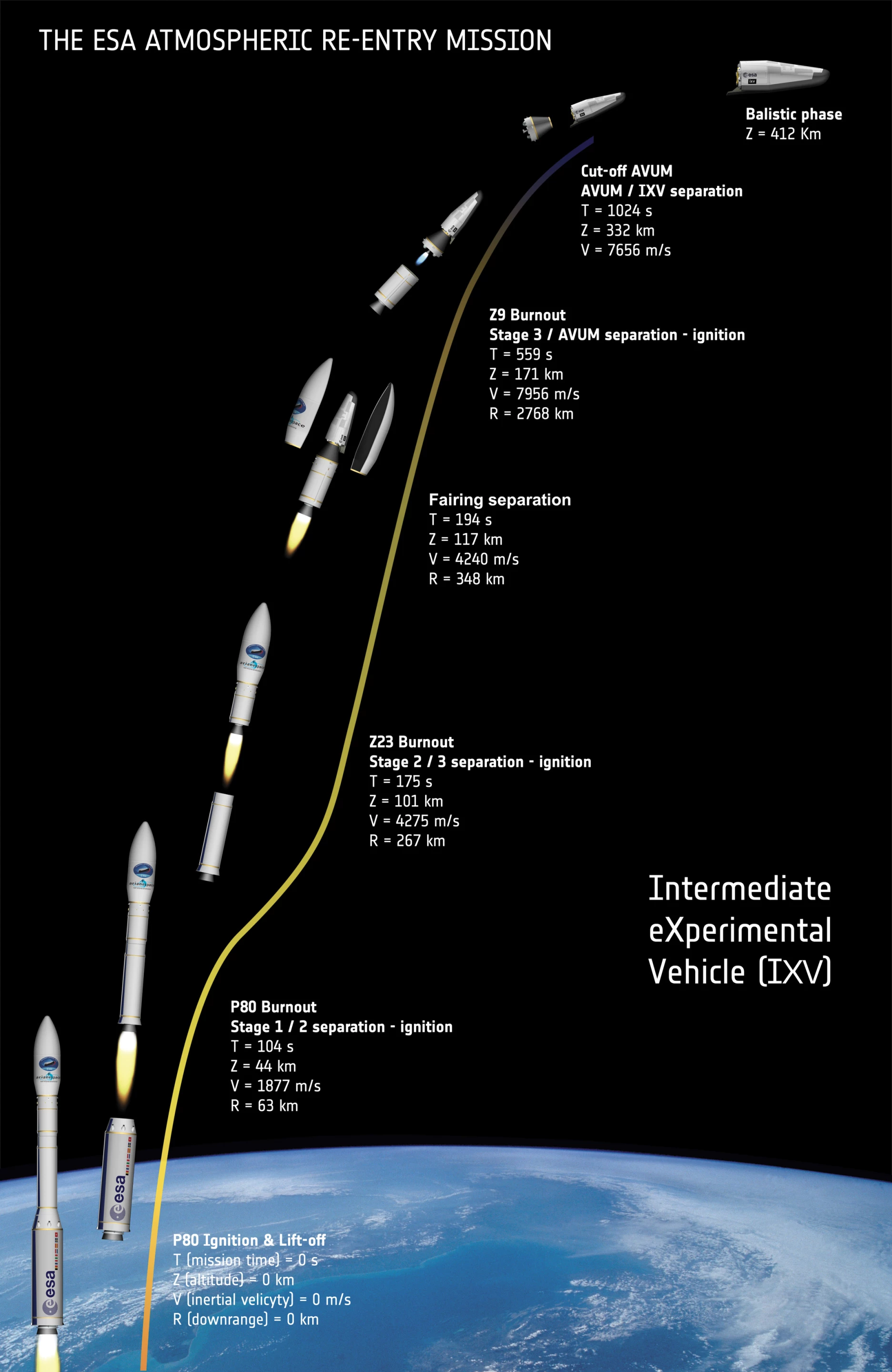The European Space Agency (ESA) has given the green light for the launch of its unmanned spaceplane, Intermediate eXperimental Vehicle (IXV). The original plan for a launch atop a Vega rocket from the ESA space center in French Guiana last November was put on hold due to safety concerns about its trajectory. With these issues now resolved, lift off is rescheduled for February 11.
IXV launch campaign manager Jose-Maria Gallego Sanz says preparations for the flight of the IXV have now been resumed. The batteries that will power the experimental spacecraft on its 100 minute flight have been removed from cold storage and reinstalled, and no other preparations are required until the actual countdown begins.
The IXV is ESA's flagship project for developing new technologies that will provide it with reusable low-Earth orbit space vehicles. Weighing almost 2,000 kg (4,400 lb), the craft is essentially a flying avionics package. Like many experimental NASA aircraft of the 1960s and '70s, the IXV is a lifting body, where the craft shaped in such a way that it is aerodynamic, producing lift and flight control like a "flying brick." This allows it to maneuver itself during reentry by banking and using a pair of vanes on its stern.

About the size of a car, IXV will be lofted to an altitude 420 km (260 mi) on a suborbital trajectory as it is tracked by ground stations in Africa and on the island of Kiribati before re-entering the atmosphere at 7.5 km/s (16,777 mph) to simulate the velocity of a returning orbital spacecraft. After slowing from hypersonic speeds, it will then descend by parachute for a splashdown in the Pacific Ocean, after which it will be picked up by the Nos Aries recovery vessel now stationed at Flamenco Island Anchorage in Panama.
The video below outlines the IXV mission.
Source: ESA











